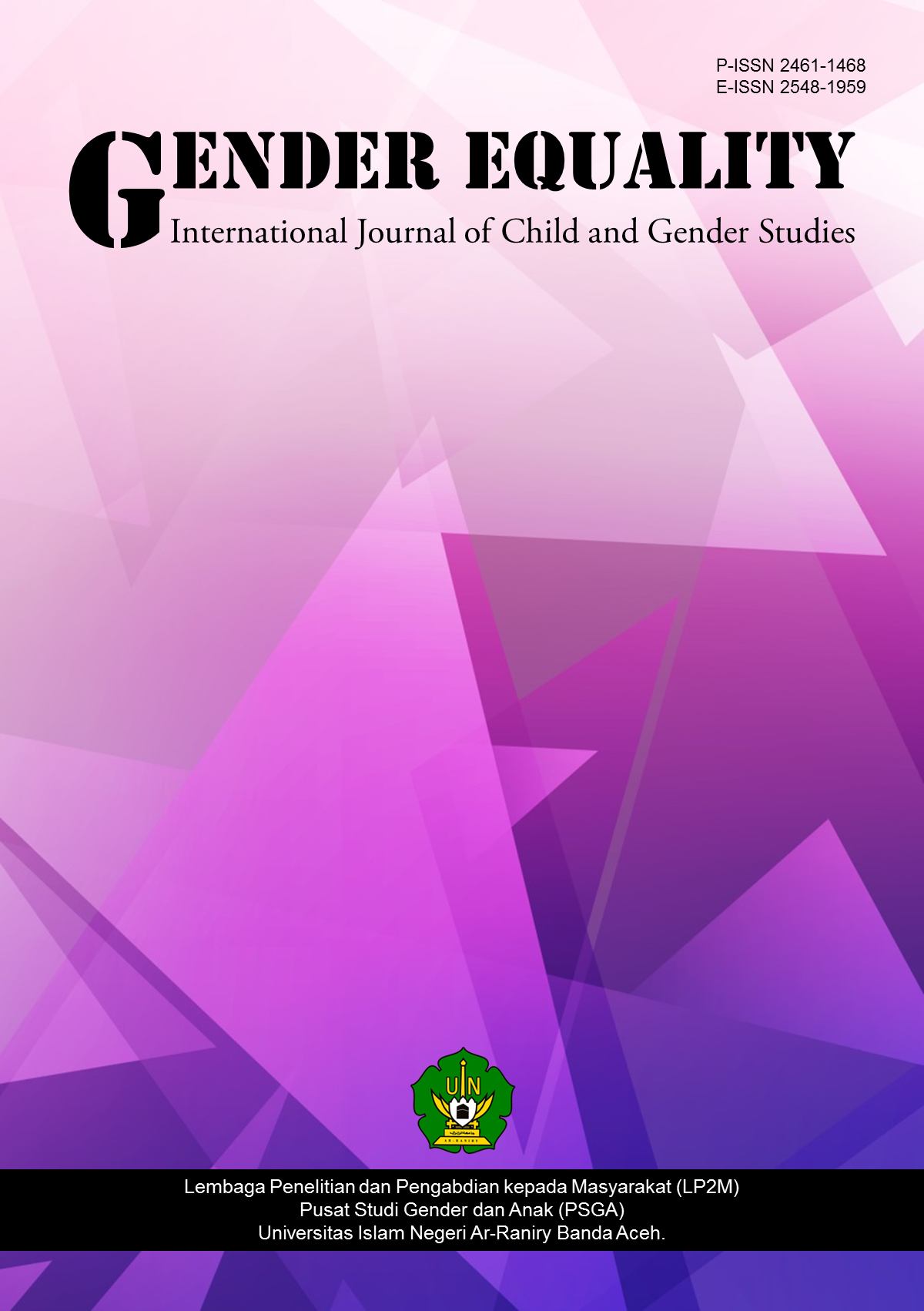Female student contestants: Exploring undergraduate students talent competition experiences (A Case Study on female students extracurricular activities)
DOI:
https://doi.org/10.22373/equality.v3i2.3447Keywords:
Gaps, number versus quality, achievement, personality, and performanceAbstract
This study explored qualitatively pictures of students experiences in developing extra activities regarding the talents and skills development. By implementing the qualitative design and interviews, the selected female studens were questioned to share their experiences.The research participants were mixed alumni and current English Department students of Universitas Islam Negery Ar-Raniry Banda Aceh. The sampling technique was purposive. The conclusion shows that most students expressed ther great thought on benefits of participating in extracurricular and talent competition activities for most of the reasons. Indeed, the attaining of competition is greater opportunities among female students in skills and experiences.References
Bauerlein, M., & Stotsky, S. (2005, January). Why Johnny won‟t read [Electronic version]. WashingtonPost. Retrieved on November 12, 2006, from www.washingtonpost.com/wp-dyn/articles/A33956-2005Jan24.html?sub=AR
Burman, A.B., Booth, J.R., & Bitan, T. (2008). Sex differences in neural processing of language amongchildren. Neuropsychologia, 46(5), 1349-1382. Retrieved on December 11, 2009, fromhttp://dx.doi.org/10.1016/j.neuropsychologia.2007.12.021Cahill, L. (2005). His brain, her brain, Scientific American 292(5), 40-47. Center on Education Policy. (2009a). State test score trends through 2007-08, part 1: Is the emphasis onproficiency shortchanging higher- and lower-achieving students? Washington, DC: Author. Center on Education Policy. (2009b). State test score trends through 2007-08, part 2: Is there a plateaueffect in test scores? Washington, DC: Author. Center on Education Policy. (2009c). State test score trends through 2007-08, part 3: Are achievementgaps closing and is achievement rising for all? Washington, DC: Author. Center on Education Policy. (2009d). State test score trends through 2007-08, part 4: Has progress beenmade in raising achievement for students with disabilities? Washington, DC: Author. Dee, T.S. (2007). Teachers and the gender gaps in student achievement. Journal of Human Resources, 42(3),528-554. Retrieved on December 11, 2009, from www.economics.uci.edu/docs/micro/s07/Dee.pdf Dee, T. S. (2005). Teachers and the gender gaps in student achievement. Working Paper #11660, NationalBureau of Economic Research. Retrieved on December 10, 2009, from www.nber.org/papers/w11660 Halpern, D.F. (2000). Sex differences in cognitive abilities, 3rd edition. Mahwah, NJ: Lawrence ErlbaumAssociates. Hyde, J., Lindberg, S.M., Linn, M.C., Ellis, A.B., & Williams, C.C. (2008). Gender similarities characterizemath performance. Science, 321, 494-495. Mead, S. (2006). The evidence suggests otherwise: The truth about boys and girls. Education Sector.Retrieved on December 15, 2009, from www.epi.elps.vt.edu/Perspectives/BoysAndGirls.pdf Perloff, R., Sternberg, R.J., & Urbina,
University of Wisconsin-Madison (2008, July 27). No gender differences in math performance. ScienceDaily.Retrieved on December 15, 2009, from www.sciencedaily.com/releases/2008/07/080724192258.htm Willingham,W.W. & Cole, N.S. (1997). Gender and fair assessment. Mahwah, NJ: Lawrence Erlbaum Associates.
Downloads
Published
Issue
Section
License
GENDER EQUALITY: International Journal of Child and Gender Studies allows the author(s) to hold the copyright and to retain the publishing rights without restrictions. Authors who publish with this journal agree to the following terms:
- Authors retain copyright and grant the journal right of first publication with the work simultaneously licensed under a Creative Commons Attribution License that allows others to share the work with an acknowledgment of the work's authorship and initial publication in this journal.
- Authors are able to enter into separate, additional contractual arrangements for the non-exclusive distribution of the journal's published version of the work (e.g., post it to an institutional repository or publish it in a book), with an acknowledgment of its initial publication in this journal.
- Authors are permitted and encouraged to post their work online (e.g., in institutional repositories or on their website) prior to and during the submission process, as it can lead to productive exchanges, as well as earlier and greater citation of published work.



